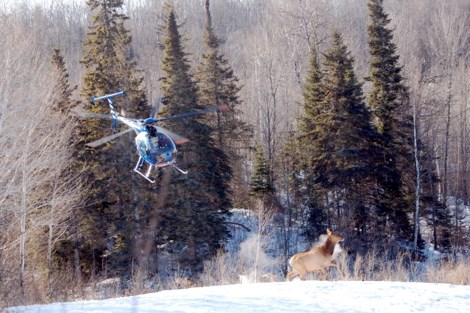NEWS RELEASE
LAKE HURON NORTH SHORE ELK RESTORATION COMMITTEE
************************* Radio collars placed on Algoma elk
The Lake Huron North Shore Elk Restoration Committee, with the assistance of the Ontario Ministry of Natural Resources, spent two days recently placing radio collars on 11 wild elk.
The elk are part of the herd that was restored to eastern Algoma after a release in April 2001.
Radio collars are used to locate the elk during annual aerial surveys, to monitor the size and health of the population.
All of the original 47 elk were radio-collared, and 10 additional collars were placed on elk in 2004, but there were only about 13 or 14 collars still working.
The expected battery life of the collars is five years, so many of the older collars are now failing.
The elk committee used the services of an experienced helicopter net-gunning company to capture and collar the animals.
Bighorn Helicopters of Cranbrook, B.C., has worked for the local elk group before, completing an elk capture project in 2004 that resulted in the relocation of 18 elk to the Elliot Lake area.
The net-gunning process involved moving individual elk onto frozen lakes or into clearings using the noise of the helicopter, then firing a net over the animal to capture it.
The two-man crew works quickly to restrain the animal by tying its feet and blindfolding it, then they are able to untangle the animal and place the radio collar before releasing the animal unharmed.
The skill, strength and boldness of these modern-day cowboys is very impressive.
The elk are in captivity for an average of only five or six minutes, and drugs are not required to immobilize the animals.
The new collars will be helpful next month, when the elk committee and MNR are planning to conduct their next annual survey to estimate the population size.
The herd size is currently thought to be around 100 to 120 animals and growing.
*************************
